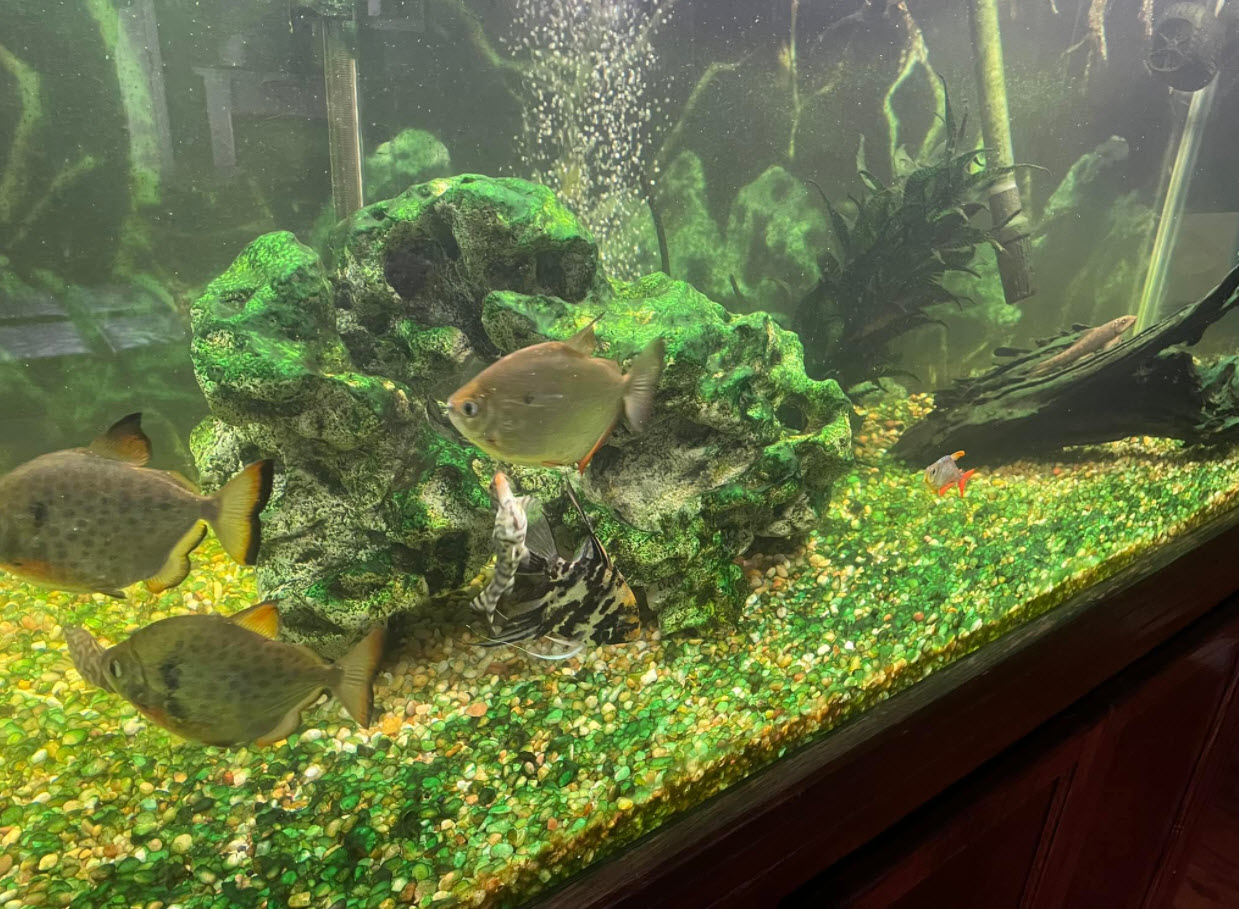Algae control is difficult because there thousands of algae species, including something called “blue green algae” (cyanobacteria) which isn’t even an algae. So making blanket statements is somewhat misleading. Each algae (or bacteria) species responds differently to different courses of action. This variability across species is the result of a very natural process called “niche evolution”. So there are no “silver bullets” when it comes to controlling algae. Sometimes a course of action will work, and sometimes it won’t work.
Fighting algae can be a very frustrating process because it is a war the algae generally win. There is one easy truth here:
The “best” way to control algae is simply: “DO NOT try to control the algae”
Just select ornaments that will look good with brown and green films on them, like this aquarium:

And the way to control algae is very dependent on what type of aquarium one has. There are four basic types of aquariums: Fish Only Aquarium, “Low-Tech” Planted Aquarium, “High Tech” Planted Aquarium, and the High Fish, High Plant Aquarium.
The last type of aquarium, the high fish, high plant Aquarium, is simply not one I want to cover. I don’t know how to set it up so that it will work without loads of problems. So I just won’t go there. I highly recommend one not try to stock a lot of fish together with a lot of plants. It just doesn’t work out most of the time.
But I cover how to control algae in the other three types of aquariums in these links:
1, In the fish only aquarium some degree of algae is simply inevitable. Learn to live with it or get yourself a whole lot of various algae eaters. But severe algae outbreaks can be controlled. See this article:
16.2.1. Controlling Algae in the Fish Only Aquarium
2, In a high tech planted tank where the CO₂ level is above 20 ppm, control of algae generally evolves around the number of plants and the lighting. One needs one vascular plant every three inches all across the aquarium. And lighting time and intensity should be brought up gradually across three to six months, from 5 hours per day to 14 or more hours per day. More can be found at this article:
16.2.2. Controlling Algae in the “High-Tech” Planted Aquarium
3, In the low tech aquarium easily 80% of the algae “problem” will be due to too little CO₂. Even low tech aquariums do far better with at least 10 ppm CO₂. In a Walstad this comes from buried organic soil. Others use a Hau bottle. More about this can be found at this article:
16.2.3. Controlling Algae in the “Low-Tech” Planted Aquarium

Als je echt planten bij je vissen wilt, zijn er enkele planten die een uitzondering vormen en gewoon niet gedood kunnen worden en die onder alle omstandigheden lijken te leven. Terwijl ze wat algen op hun bladeren krijgen, zijn de bladeren bestand tegen verstikking door algen. En ze lijken onder alle omstandigheden te leven zonder enige kunstmest. Ze leven zelfs met zeer weinig licht.
Anubias (just don’t put the bulbs INTO the substrate), Amazon Sword (Echinodorus amazonicus), Java Fern (Leptochilus pteropus, synonym Microsorum pteropus), and Java Moss (Taxiphyllum barbieri). Java fern and Java moss are both “epiphytes” and need to be either attached to a surface like a piece of wood or they need a very open substrate like aquarium gravel. If you bury the crown on Java fern in sand it will die.
Algae Eaters
One easy way to control nuisance algae is to use algae eaters. These include sucker catfish such as bristlenose catfish (ancistrus), otocinclus, flying foxes (Epalzeorhynchos kalopterus), Silver Flying Fox (Crossocheilus reticulates) and the very similar Siamese algae eaters (Crossocheilus siamensis). Black mollies and redline sharks also eat algae. Snails and shrimp are also useful algae eaters, These can all be very effective tools to control algae. More about this can be found at this link

The Algae “War”
There is a central theme in controlling algae in planted aquariums along the lines of “thriving plants control algae”. We go into that topic in depth in the following link:
Chemical Algae Control
We do not recommend chemicals to treat algae. Any chemicals (save antibiotics for “blue green algae”) which kill algae will also kill both plants and fish. For more information go to this link:
16.2.6. Chemical Control of Aquarium Algae
And there are several devices out of Europe that are just sneaky ways to do chemical control of algae:
Further Information on Algae
Click on the following links for more information on algae, again, with the caution that separating algae into “types” is very, very inaccurate:


